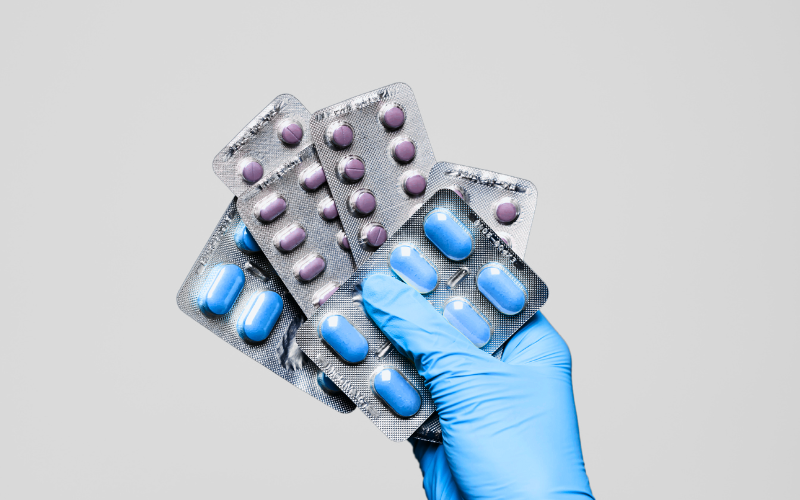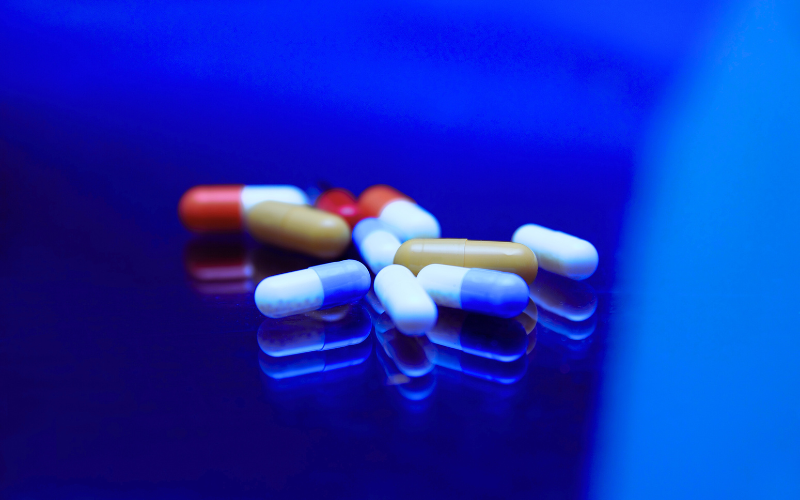Boosting Manufacturing Safety with Fingerprint Drug Testing Technology
In the high-pressure world of manufacturing, safety and productivity go hand in hand. To maintain efficiency and protect employee well-being, organizations need smart, adaptable solutions. Intelligent Fingerprinting is working with leaders in manufacturing to redefine the future of workplace drug and alcohol testing through non-invasive, efficient, and reliable technology.
Reducing Risk on the Factory Floor
Manufacturing environments present constant hazards—from fast-moving conveyor belts to dangerous cutting tools and heavy machinery. When an incident occurs, the consequences can be serious: operations halt, injuries require investigation, morale declines, and business continuity takes a hit.
Take the case of David Wood Baking Ltd, a UK-based food manufacturer. In 2022, the company experienced a series of severe incidents, including a worker’s arm being dragged into a conveyor, another becoming trapped in an industrial mixer, and a third losing a finger. The Health and Safety Executive found significant failures in training and supervision—and fined the company £180,000 for breaching safety regulations.
While these cases weren’t explicitly linked to drug or alcohol use, they highlight how even small lapses in focus or safety awareness—whether due to fatigue, impairment, or insufficient oversight—can lead to devastating consequences. In high-risk environments like manufacturing, ensuring workers are clear-headed and alert is non-negotiable. That’s why proactive measures like workplace drug and alcohol testing are so critical: they help prevent incidents before they happen, protecting both people and productivity.
Prioritizing Safety and Accountability
Manufacturers have a legal and moral duty to protect their employees in what are often high-risk environments. Under the Health and Safety at Work Act 1974, UK employers must ensure, as far as is reasonably practicable, the health, safety, and welfare of their workforce. This goes beyond ticking compliance boxes—it means establishing robust, enforceable safety policies that prevent accidents before they happen. Failing to do so can result in enforcement action, reputational damage, and significant financial penalties.
In 2025, ADM Milling Ltd was fined £300,000 after a worker at its Corby facility suffered a partial finger amputation during maintenance on an 800kg packing machine. The Health and Safety Executive (HSE) found that the company had failed to properly assess the risks of the task, which led to the machine tipping and crushing the worker’s hand. The HSE concluded the incident was “wholly avoidable” and highlighted the importance of planning and reviewing all maintenance activities to protect workers from harm
This incident demonstrates that when employers don’t do their part to keep staff safe, the impact is twofold: workers’ lives and livelihoods are disrupted, and businesses face reputational damage, financial penalties, and operational setbacks. That’s why clearly defined safety procedures—including proactive measures like workplace drug and alcohol testing—are critical. These programs help ensure staff are not only protected, but also mentally and physically prepared to work safely every day.
Implementing Drug and Alcohol Testing to Protect Your People and Business
In manufacturing, where fast-paced operations and heavy equipment are the norm, even a moment’s impairment can lead to life-altering injury or significant operational disruption. Employers have a responsibility—not just legally, but morally—to identify and reduce risks wherever possible. That includes addressing the threat posed by drug or alcohol misuse in safety-critical roles.
Having a structured, well-communicated drug and alcohol testing program is one of the most effective ways to protect both your team and your business. It reinforces a safety-first culture, deters misuse, and helps identify potential issues before they become incidents. Done well, testing ensures staff are physically and mentally prepared to perform at their best, creating a safer workplace for everyone—and preventing the kind of disruptions that can derail production, damage reputations, and lead to serious harm.
If you’re unsure where to start, we’ve put together an article outlining the key considerations for building a robust workplace drug and alcohol policy—from policy creation to choosing the right testing methods.
Choosing the Right Testing Method
When it comes to implementing a workplace drug testing program, employers have several testing options—each with pros and cons. Urine testing is widely used and backed by lab infrastructure, but it’s invasive and has a longer detection window, making it less effective at confirming recent use. Oral fluid testing is less invasive and detects more recent usage, but requires close observation during collection to prevent tampering.
Intelligent Fingerprinting offers a unique, non-invasive alternative: a sweat-based test that takes just 10 minutes and requires only a fingerprint sample. It detects recent drug use—including cannabis, cocaine, opiates, and amphetamines—with a narrow detection window that aligns perfectly with workplace needs. It’s designed to determine if someone is fit for duty that day, helping employers make confident, immediate decisions that prioritize both safety and productivity.
Real Success from Leading Manufacturers
James Jones & Sons Ltd
One of the UK’s largest timber processors, James Jones & Sons Ltd turned to Intelligent Fingerprinting to enhance its workplace safety protocols. The company needed a fast, reliable way to conduct regular employee drug screening while minimizing disruption. Our system enabled them to complete on-site testing with ease, improving speed and consistency in their health and safety programs.
Robinson Brothers
As the UK’s largest independent chemical manufacturer, Robinson Brothers knew high standards were non-negotiable. They brought drug testing in-house with our portable, digital solution—boosting flexibility and accelerating their substance abuse prevention strategy. By detecting drug metabolites in minutes, they’ve elevated both safety and efficiency in a demanding production environment.
Final Thoughts: Safety Starts With Clarity—and Action
Manufacturing isn’t forgiving of guesswork. The margin for error is razor-thin, and the cost of inaction—whether to workers’ wellbeing or to operational continuity—is simply too high. Employers who take workplace safety seriously understand that a robust drug and alcohol testing program is not about policing—it’s about protecting. It shows staff, regulators, and stakeholders that you’re invested in doing things right.
Whether you’re looking to strengthen your current policies or starting from scratch, now is the time to assess your approach. Identify the roles most exposed to risk. Evaluate your testing options. Set clear expectations—and communicate them consistently. Because when your workforce is alert, focused, and supported, everything else performs better too.
To learn more about how fingerprint sweat testing could support your workplace compliance program, book a demo.










